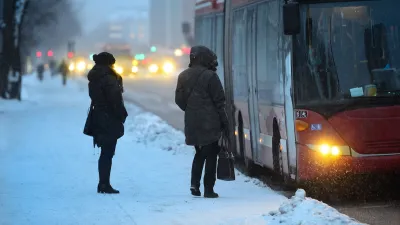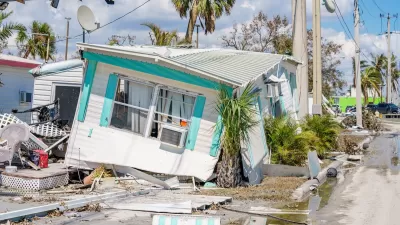Sewage overflows, invasive species and polar vortexes — America’s climate haven might be more illusive than we think.
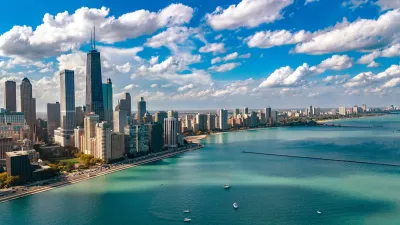
The Great Lakes region generally rates near the top of the list of the most climate resilient regions in the US. Its inland-north location, moderating climate, and abundant supply of fresh water gives it a major edge against other parts of the country where extreme heat and drought will soon wreak regular havoc. Beyond that, its proximity to some of the most productive farmland in North America makes it one of the most food-secure regions of the country. It is a national leader in renewable energy production, particularly wind and hydroelectric power. It’s at low risk for major natural disasters. The list goes on and on.
The region’s reputed resiliency factor is believed by some to hold the key to the region’s economic resurgence. As people and companies seek refuge from the increasingly expensive and disaster-wracked parts of the U.S., the thinking goes, they will be drawn to the relative affordability and disaster-resistance of the Upper Midwest. This redistribution, it is further believed, will also help ease the nation’s entrenched housing problem as people return to the depopulated and “overbuilt” cities of the north. The Great Lakes cities of Buffalo, NY and Duluth, MN, at the extreme opposite ends of the Great Lakes system, have both claimed themselves to be the nation’s top affordable climate havens for these very reasons.
But the new “cool is cool” marketing hook, which comes complete with the veiled promises of shorter, milder winters, may be downplaying the very real climate challenges facing the region. More than this, they may portray an unrealistically optimistic future for a region still struggling with decades-long economic dislocation and population loss.
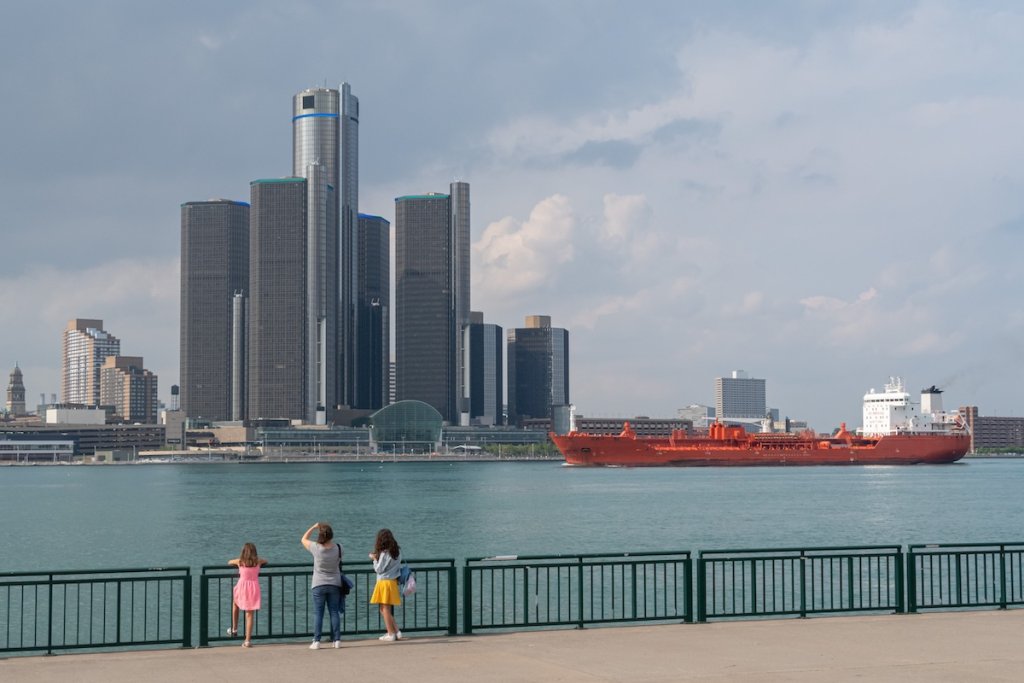
Northern exposures
Beneath the hype, the region faces a host of both potential and very real climate-related problems. Many of these relate to the ecological fragility and volatility of the lakes themselves, which contain a full 20 percent of the world’s fresh surface waters.
For starters, decades-long invasions of exotic species introduced into the Great Lakes by oceangoing ships continue to drastically change the ecology of the lakes. Warming water temperatures are expected to accelerate the cycle of species’ succession and replacement. Perhaps the most feared invader is the prolific and gluttonous Asian Carp which has threatened for years to breach Lake Michigan from the Chicago Sanitary and Ship Canal connecting the Great Lakes to the Mississippi River via Illinois’ Des Plains River. The carp’s intrusion into Lake Michigan is greatly feared due to their dominance over the aquatic food-chain.
Other threats to the lakes come from their continued pollution which, although much abated from the infamous 1970s when Lake Erie was declared “dead,” still presents a major problem. These days much of the pollution is from “non-point” agricultural runoff as well as from periodic public sewage system overflows during increasing heavy rainfalls, resulting from aged systems that combine stormwater and sewage. Milwaukee, Cleveland and Chicago have invested heavily in huge underground tank and tunnel systems to mitigate the issue, but these projects are both extremely expensive and almost entirely invisible, making them a difficult sell. They’re also not a cure all: today’s storms pack a much wetter punch, and increased water volumes still cause sewage to back-up in streets and in basements before it ever reaches the tunnels.
Out of depth
An even bigger problem facing the lakes is the wild swings in their water depths. The lakes have recorded some of their highest highs and lowest lows within a period of only a few years between 2013 and 2020. Low lake levels are attributable to evaporation caused by higher air temperatures, stronger winds, and the lack of ice cover during the winter. High lake levels are related to an increased intensity of rainfall and runoff within the Great Lakes watershed. Both conditions cause harm: the former to recreation and shipping, and the latter causing coastal erosion.

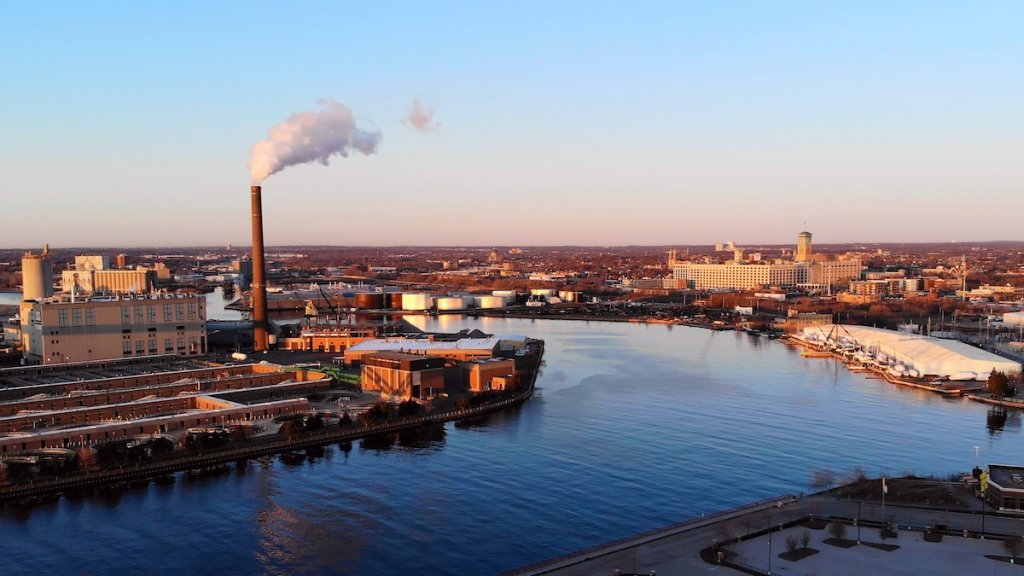
As a result, cities along the Great Lakes are employing a combination of shoreline hardening and retreat to deal with their growing erosion problems. The City of Milwaukee, for example, is pursuing federal funding to build a section of “living breakwater”: a more naturalized reef that would buttress a major section of the nearly 6 mile breakwater system that separates its inner harbor from the open waters of Lake Michigan. In 2020 Marquette, Michigan was forced to relocate a major section of its Lakeshore Drive inland due to repeated washouts. The State of Illinois is experimenting with the creation of two artificial offshore reefs near Chicago to dissipate the force of waves that are eroding nearby beaches and bluffs.
The Great Lakes Compact, compacted
The combination of unpredictable lake levels, persistent droughts, and the current institution-busting political moment has renewed concerns about possible future attempts to siphon-off Great Lakes water to help supply more arid regions in the U.S. Although the Great Lakes Compact — a 2005 agreement by all of the Great Lakes states and the Canadian provinces of Ontario and Quebec to prohibit most water diversions outside the Great Lakes watershed — was enshrined into Federal law in 2008, there is nagging fear that the compact could be eventually overturned in the future under the guise of a national climate emergency. Although this eventuality seems fairly remote, paranoia is growing especially given the current administration’s penchant for sweeping decrees and its antipathy toward most environmental protections.
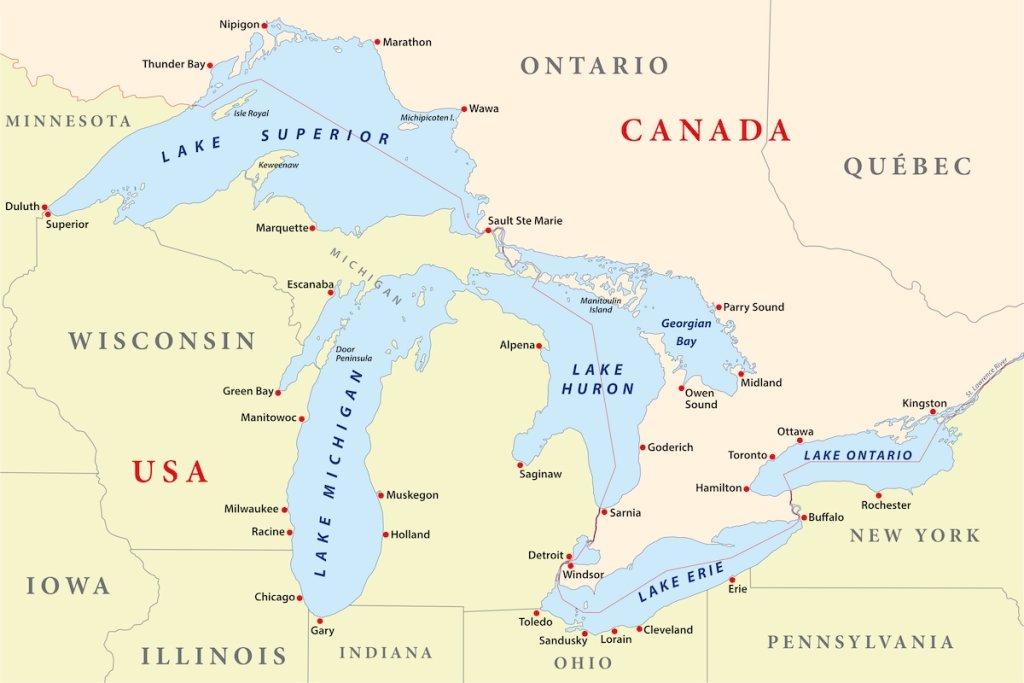
The only diversion approved thus far under the compact has been to suburban Waukesha County Wisconsin which straddles the Great Lakes watershed and whose depleted ground water supplies have been contaminated with radium. The City of Chicago meanwhile has used a grandfather clause in the compact in favor of the state of Illinois, to agree to supply Lake Michigan water to the city of Joliet, some 30 miles outside of the Great Lakes watershed, under the same rationale. Communities inside the watershed have been long wary about similar “trickles” that could turn into torrents: this, despite the compact’s tightly proscribed criteria for granting exceptions.
Illusive haven
Although it is clearly at less risk for major headline-grabbing natural disasters, the Great Lakes region is not immune to them either. The enveloping smoke from the 2022 Canadian wildfires which hung over the region for weeks, along with the miles long algae bloom that caused a water emergency in Toledo in 2014 and the infamous 1995 Chicago heatwave that killed over 600 people serve as stark reminders that the region is not impervious to such calamities.
In fact, in June of this year the cities of Minneapolis and Milwaukee registered the worst air quality in the world on consecutive days: the result of wafting wildfire smoke from Canada. And although it isn’t as susceptible to extended periods of extreme heat, wildfires and permanently submerged coastlines as other parts of the country, its preparedness for dealing with slower-moving problems like water depletion, or the further deterioration of already old infrastructure, may be lagging compared to more vulnerable coastal cities. This is because the disasters affecting the latter have often been more psychologically jolting, resulting in accelerated adaptation planning.
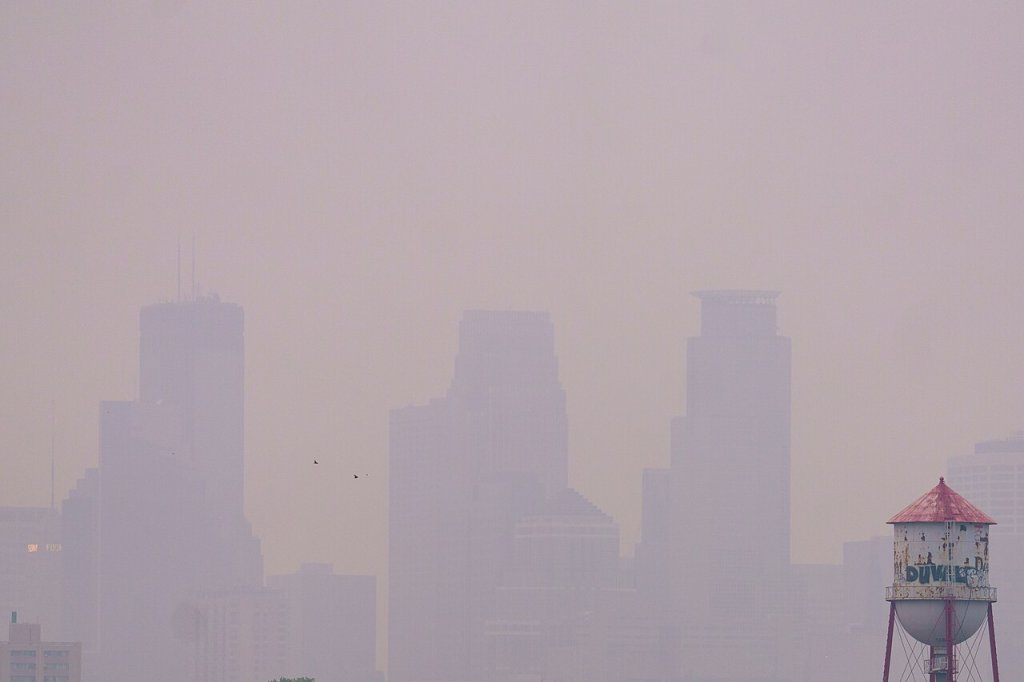
To boot, counterintuitively, given that winter snowfall has been on the decline in many parts of the region, the risk of anomalous life-threatening snowstorms is actually anticipated to be higher with warner temperatures and a more moisture-rich atmosphere. Areas of the Upper Midwest, along with large parts of the nation’s midsection, may even experience more extreme cold days resulting from stalled polar vortexes.
In the end, whether the region ever emerges as a future climate retreat may depend less on any natural advantages or accidents of geography, than how well it responds to its own climate-related challenges. Equally critically, the cities of the Great Lakes must contend with the other problems that have dogged them for years: lead pipes; a lack of decent jobs, and failing schools. Their economic strategies will need to be more inclusive, innovation-based and reach well beyond trying to attract hot-running bitcoin mines with the promise of “free” ambient cooling. The region was late to rise to the challenges of economic globalization. It can’t afford to be complacent now.
Greg Flisram is a Principal with the Kendig Keast Collaborative, a Texas-based national planning and economic development consultancy. He has worked extensively throughout Texas and the United States.

Planetizen Federal Action Tracker
A weekly monitor of how Trump’s orders and actions are impacting planners and planning in America.

Chicago’s Ghost Rails
Just beneath the surface of the modern city lie the remnants of its expansive early 20th-century streetcar system.

San Antonio and Austin are Fusing Into one Massive Megaregion
The region spanning the two central Texas cities is growing fast, posing challenges for local infrastructure and water supplies.

Since Zion's Shuttles Went Electric “The Smog is Gone”
Visitors to Zion National Park can enjoy the canyon via the nation’s first fully electric park shuttle system.

Trump Distributing DOT Safety Funds at 1/10 Rate of Biden
Funds for Safe Streets and other transportation safety and equity programs are being held up by administrative reviews and conflicts with the Trump administration’s priorities.

German Cities Subsidize Taxis for Women Amid Wave of Violence
Free or low-cost taxi rides can help women navigate cities more safely, but critics say the programs don't address the root causes of violence against women.
Urban Design for Planners 1: Software Tools
This six-course series explores essential urban design concepts using open source software and equips planners with the tools they need to participate fully in the urban design process.
Planning for Universal Design
Learn the tools for implementing Universal Design in planning regulations.
planning NEXT
Appalachian Highlands Housing Partners
Mpact (founded as Rail~Volution)
City of Camden Redevelopment Agency
City of Astoria
City of Portland
City of Laramie


























